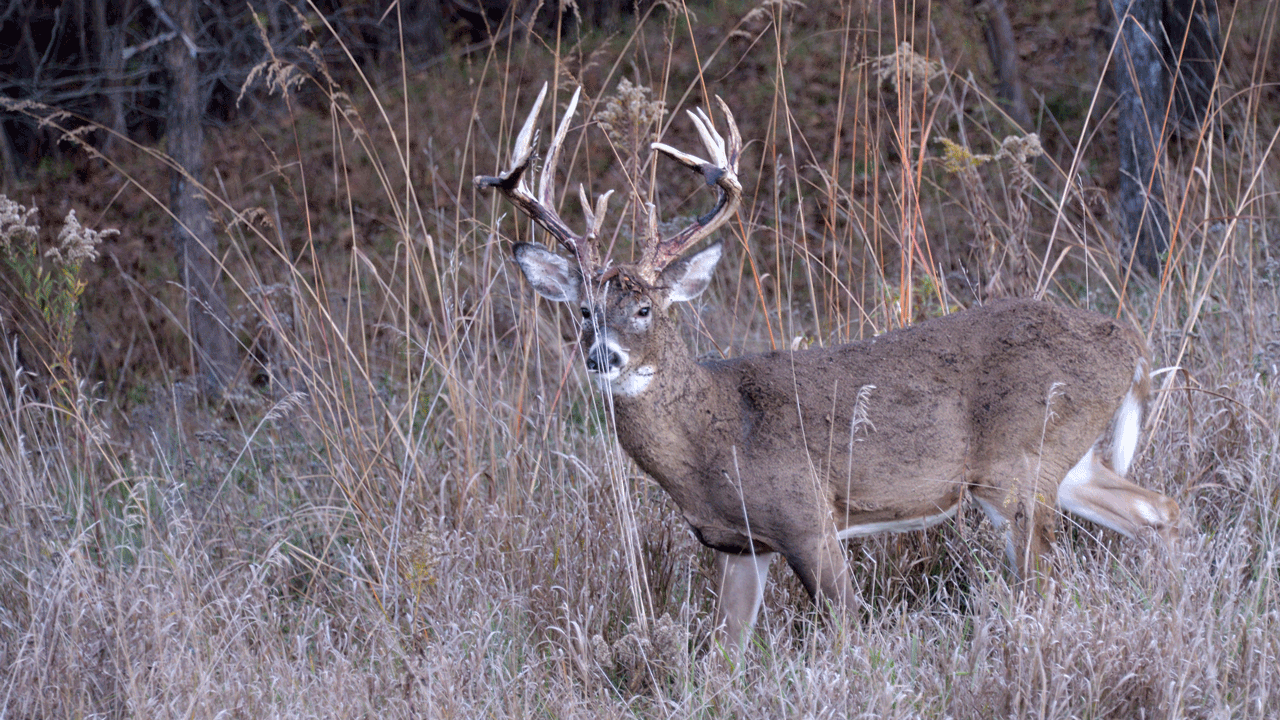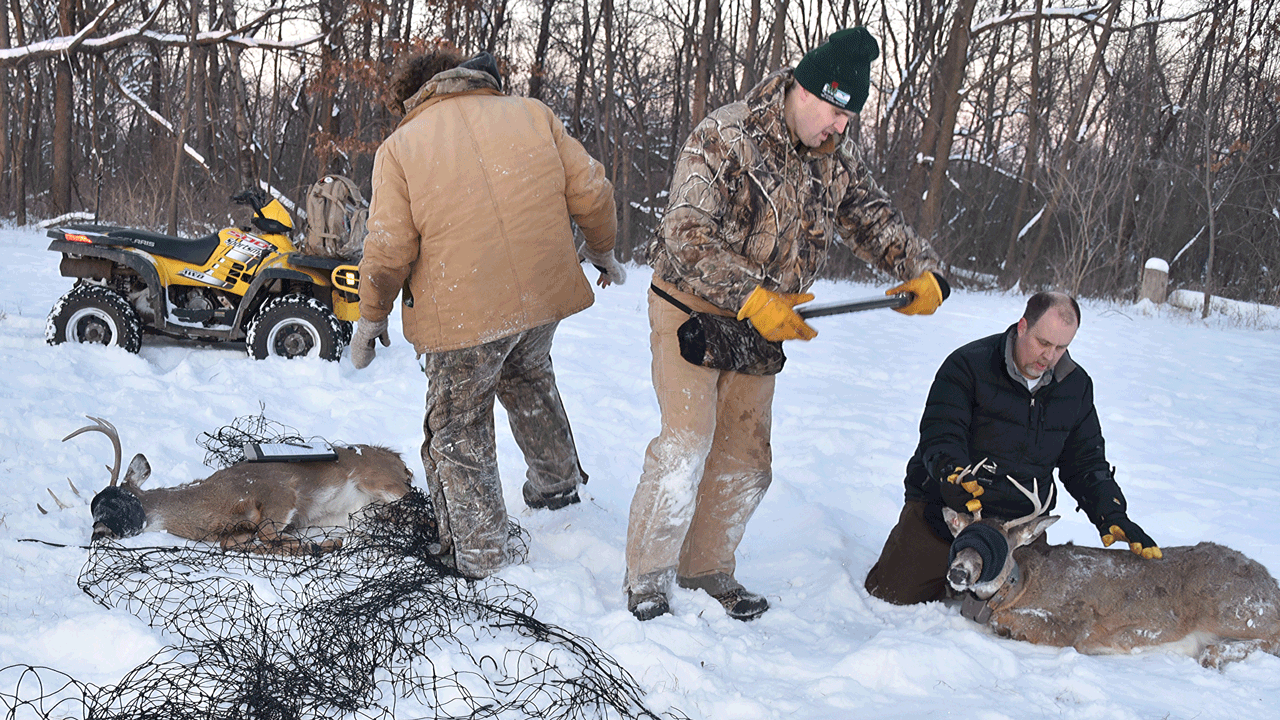The skeptical questions, and impromptu speeches disguised as questions, sounded all too familiar to many bowhunters back in January during an hour-long press conference on chronic wasting disease at the annual Archery Trade Association Trade Show. For many, the question quickly surfaced, “Is CWD worse than EHD in whitetail deer?” This and many other questions were hurled at the panel from those in attendance seeking answers.
The panel discussion/press conference was convened by the Quality Deer Management Association and the National Deer Alliance. Its panel included Brian Murphy, QDMA’s CEO; Kip Adams, QDMA’s conservation director; Nick Pinizzotto, the NDA’s president/CEO; and Dr. Grant Woods of “Growing Deer TV.”

Skeptics remain vocal even as chronic wasting disease spreads and worsens in white-tailed deer around the country.
After the panelists spent 30 minutes briefing the crowd on CWD’s continued spread in North America, some audience members fretted that state wildlife agencies are trying to eradicate deer herds before CWD can inflict the same fate. Others questioned CWD’s lethality, noting that outbreaks of epizootic hemorrhagic disease, or EHD, leave lots of rotting bodies behind. “Where are CWD’s carcasses?” they mumbled.
Let’s address the skeptics’ questions. Yes, EHD makes its case more visibly than CWD. EHD typically hits specific areas with force, dropping deer in or near ponds and other waters where thirsty, fevered victims sought relief. EHD then vanishes, often staying away years before returning, while its survivors grow more immune.
CWD is far subtler yet deadlier, moving in slowly and never leaving. Its victims simply fade away during two-plus-year struggles with the always-fatal disease, which leaves them three times more likely to die in a given year than healthy deer. Research shows CWD carriers are more likely to get hit by cars, shot by hunters or taken down by predators.
These doomed deer typically look healthy to our untrained eyes. Therefore, saying CWD doesn’t kill deer is like claiming cancer wouldn’t kill people if not for flu and pneumonia.

Chronic wasting disease has now been found in 26 states, including 91 cases in Tennessee since its initial discovery there in December.
Meanwhile, as CWD increases its range and worsens where already found, wildlife agencies in Iowa, Tennessee, Missouri, Minnesota, Michigan, Montana and other states extend hunting seasons and impose mandatory sampling to assess the disease’s presence and frequency.
No state, however, seeks herd eradication. The Wisconsin DNR launched that suicide charge in 2002, unintentionally sparking a public/political backlash that emboldened naysayers and undercut scientific disease management ever since.
No one should wish such opinions on CWD’s more inexperienced hosts, such as Tennessee, with at least 91 cases so far in wild deer; Maryland, 27 cases; Minnesota, 32; Iowa, 44; Michigan, 111; Missouri, 86; West Virginia, 350; Arkansas, 400-plus; or even Illinois, 750-plus since 2002.
Wisconsin has identified 5,220 cases of CWD in that time, roughly three times the combined total of those nine states.
Before the nation’s louder skeptics heap more scorn on wildlife agencies, they should study Wisconsin’s CWD data. As of Feb. 7, the Wisconsin DNR had confirmed CWD in a record 1,034 of 16,920 (6.1 percent) hunter-killed deer tested so far in 2018-19. The previous record was 602 in 2017-18, when the DNR tested 9,907 (6 percent) hunter-killed deer.
Those aren’t statewide averages, of course. Testing is voluntary and there’s nothing systematic about it.
For a more focused review, look at Wisconsin’s CWD core area of Dane, Iowa, Sauk and Richland counties west of Madison, where 878 hunter-killed deer tested positive for CWD, or 85 percent of Wisconsin’s 1,034 CWD cases so far in the current testing cycle, which ends March 31. Those four counties account for 4,641 CWD cases since 2001, or 89 percent of Wisconsin’s 5,220 cases.

Wisconsin has identified 5,220 cases of CWD since 2001, roughly three times the combined total of the next nine states with established CWD problems.
Those outside Wisconsin who question their states’ “aggressive” CWD actions should consider how former Wisconsin DNR Secretary Cathy Stepp’s “passive” approach has worked since its 2014 inauguration.
Four years ago, Dane, Iowa, Sauk and Richland counties generated 307 CWD cases from 2,703 hunter-killed deer, an 11.4 percent infection rate. This year’s 878 CWD cases in that area came from 4,818 hunter-killed deer, an 18.2 percent rate. Yes, hunters provided 76 percent more samples in 2018, but with voluntary testing it’s anyone’s guess if more samples dilute or increase detection rates.
Meanwhile, at January’s press conference at the ATA Show, Pinizzotto encouraged hunters to “own” the disease by working together to support wildlife agencies and science-based efforts to learn more about CWD. He said the NDA now spends 75 percent of its efforts on CWD, including trips to Washington, D.C., to ask lawmakers to fund more research and testing.
Pinizzotto said lawmakers are finally listening, because the disease has been found in elk or deer in 26 states. Tennessee became the most recent state to identify CWD in wild deer when it confirmed 13 cases in late December and at least 78 more since.
Officials at the National Elk Refuge near Jackson Hole, Wyoming, are also concerned about CWD at the refuge’s famous feeding grounds after a nearby mule deer in Teton County tested positive in November.
Pinizzotto also urged hunters to get their information from the CWD Alliance (cwd-info.org), a nonpartisan, science-based group affiliated with the Wildlife Management Institute, Boone and Crockett Club, Mule Deer Foundation, Rocky Mountain Elk Foundation, Whitetails Unlimited, National Shooting Sports Foundation and other respected conservation groups.
“We must get past all the misinformation that’s out there,” Pinizzotto said. “It’s easy to believe someone when they say exactly what you want to hear, but this is a real problem and it’s not going away.”
We want to hear from you. Is CWD worse than EHD in whitetail deer? What do you think? Comment below and let us know your thoughts on the issue.

 By
By 



